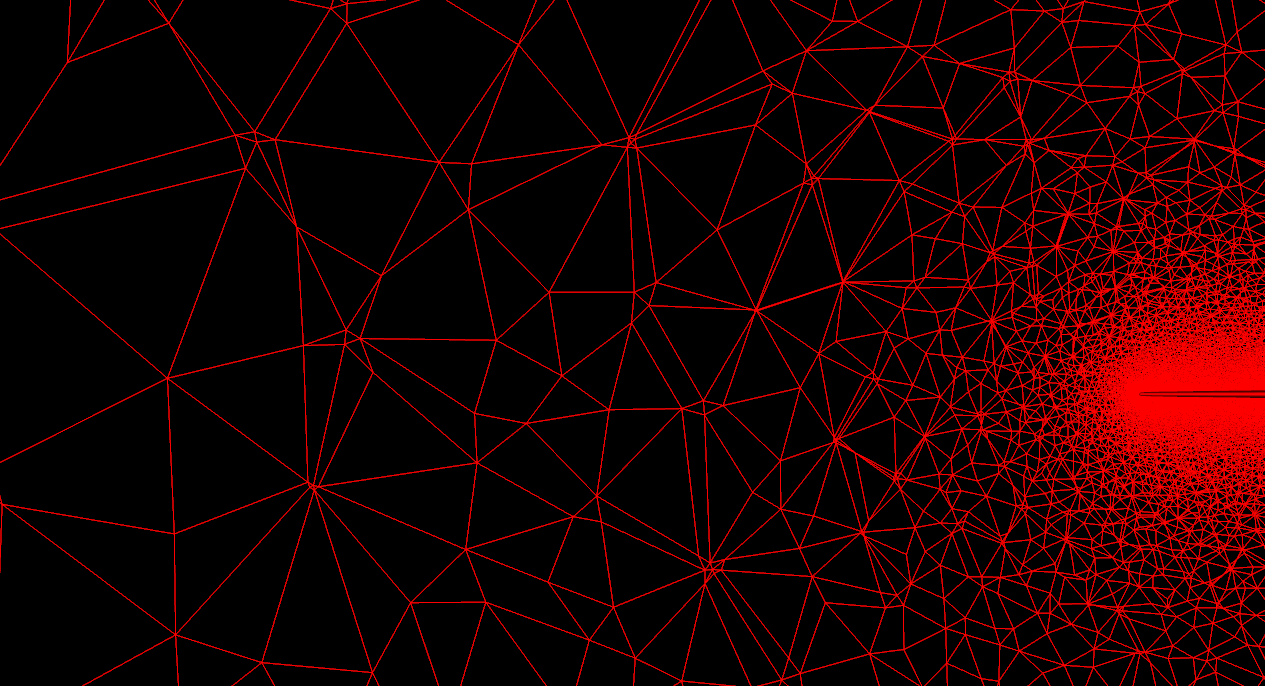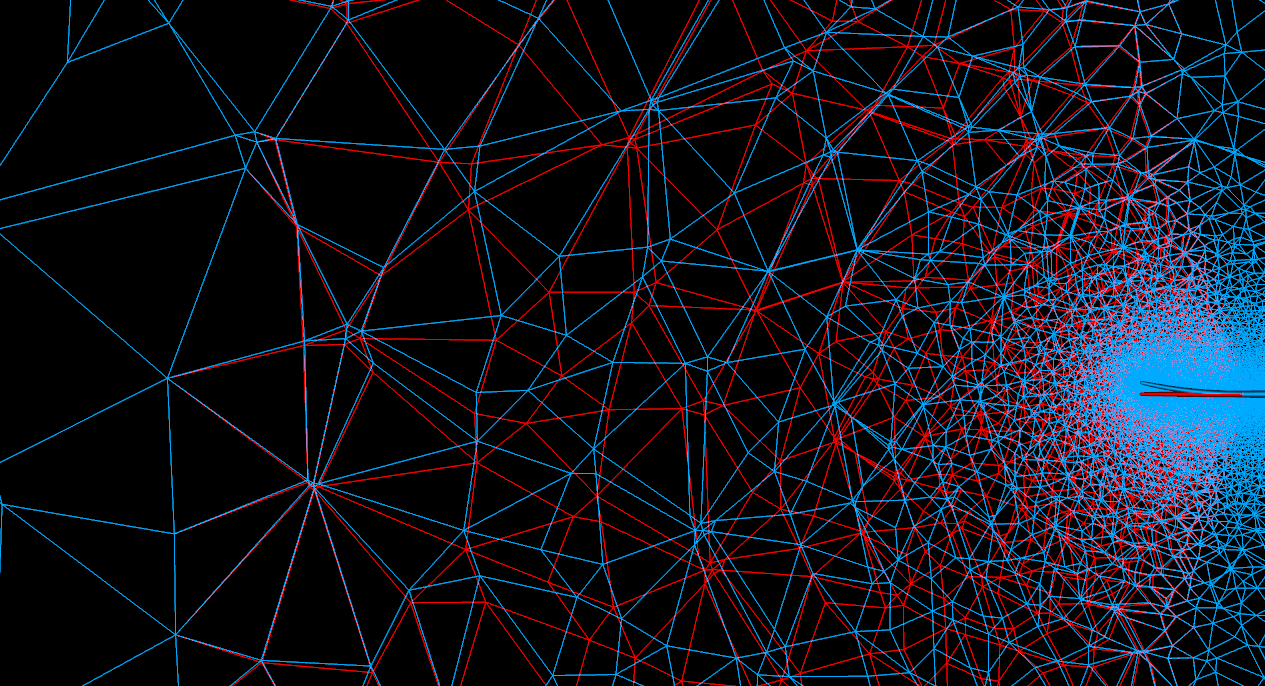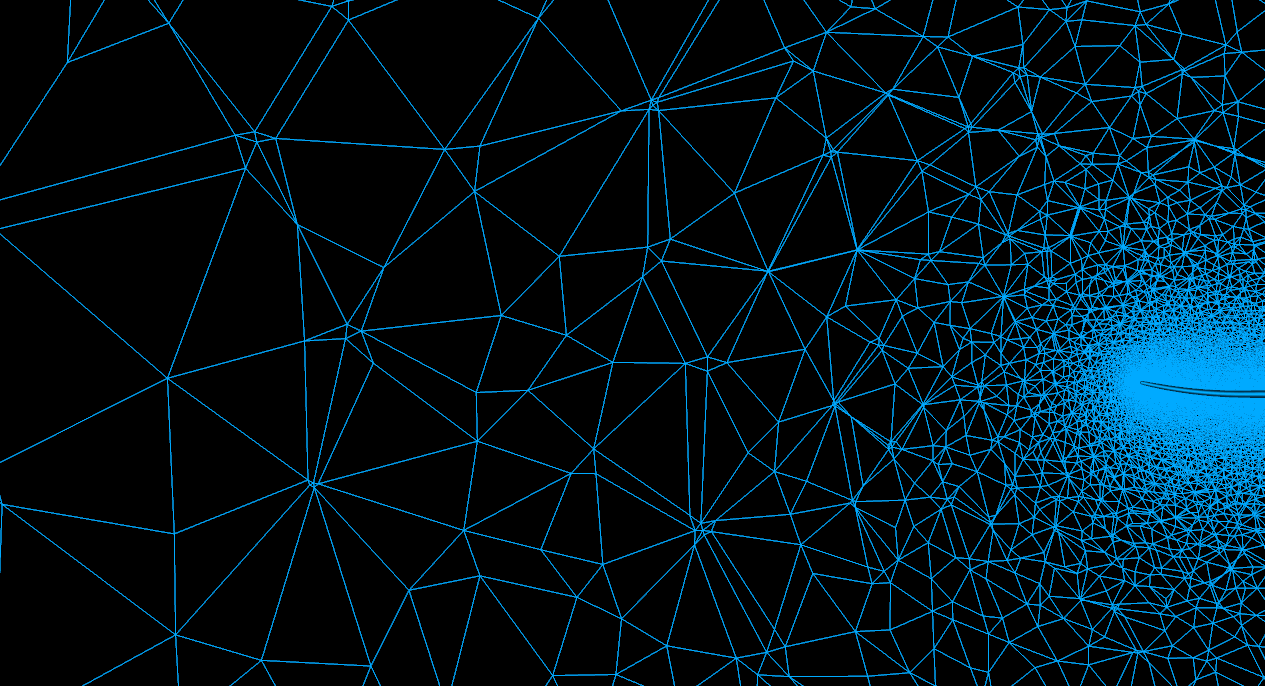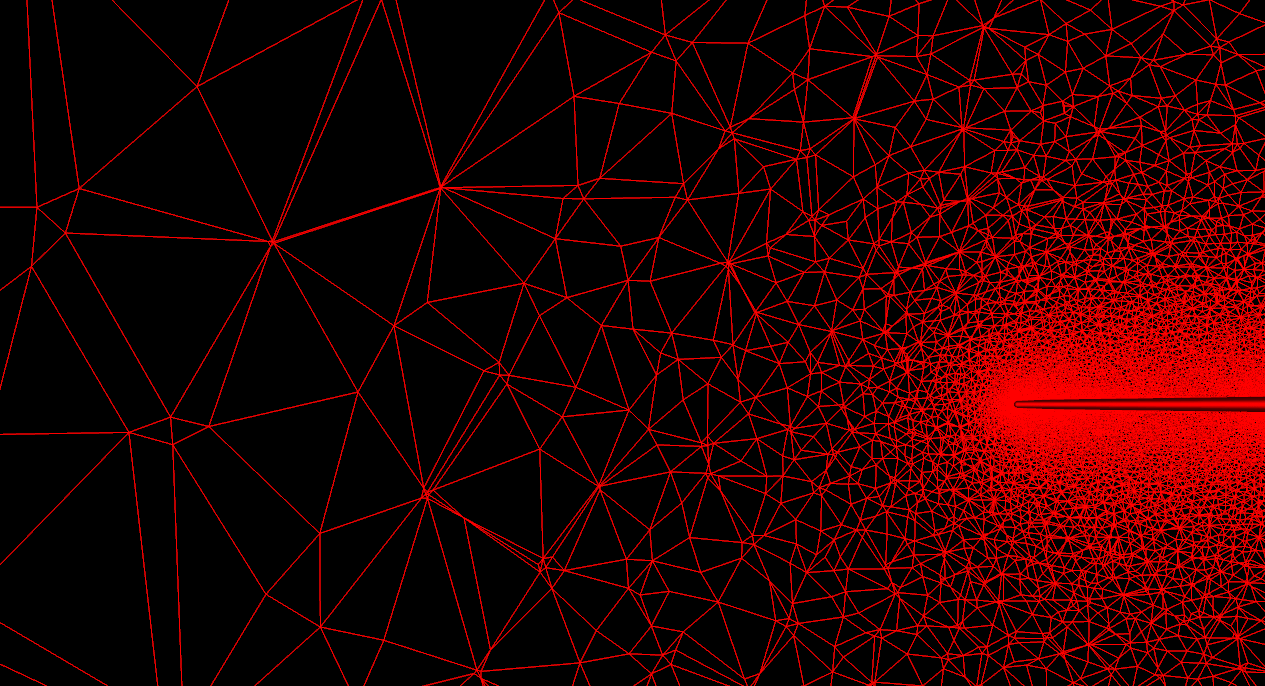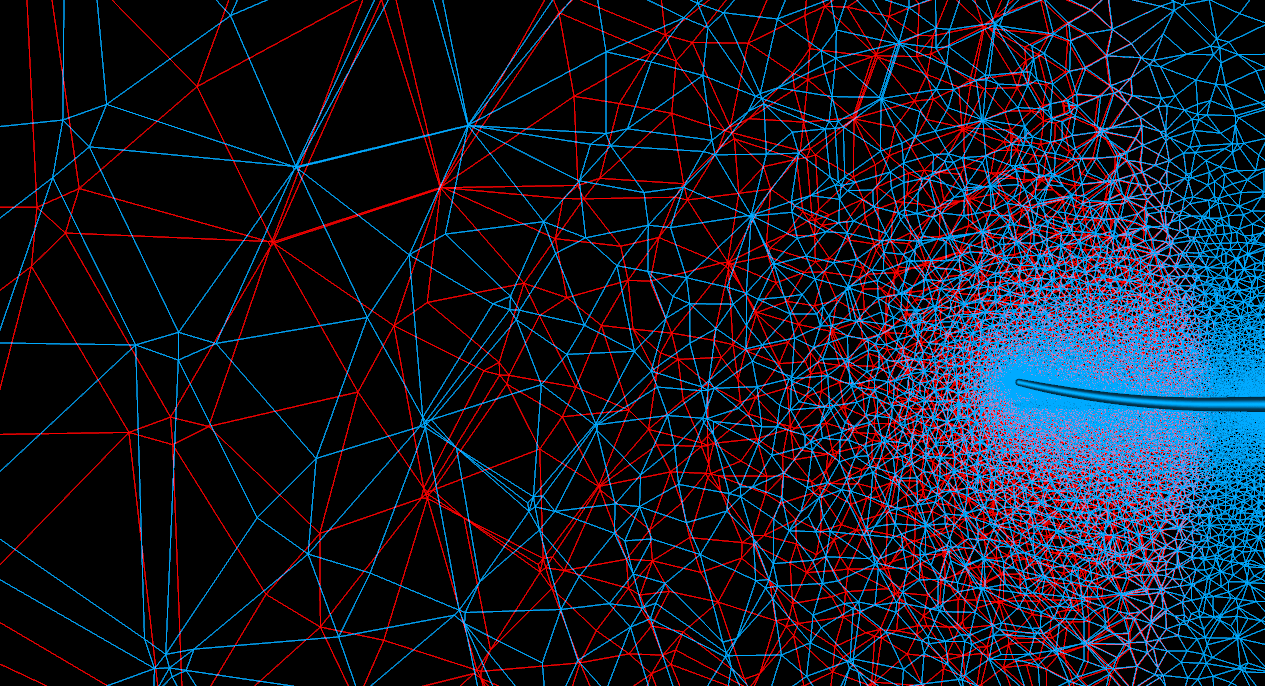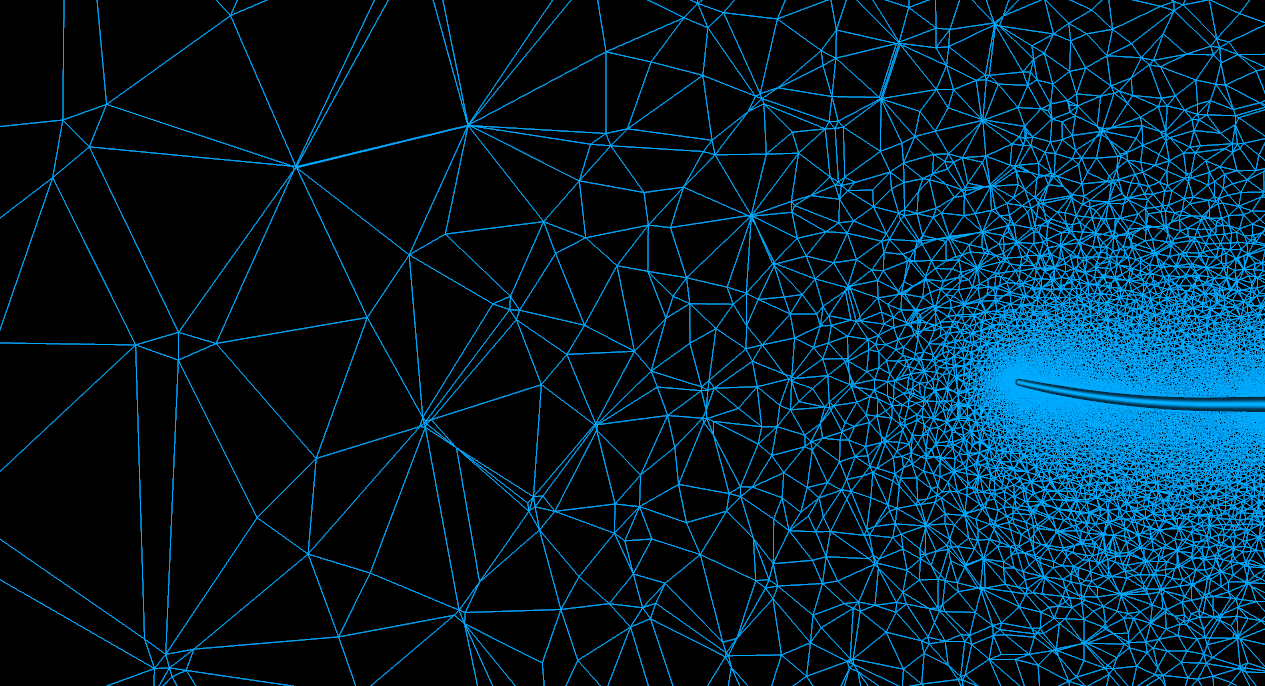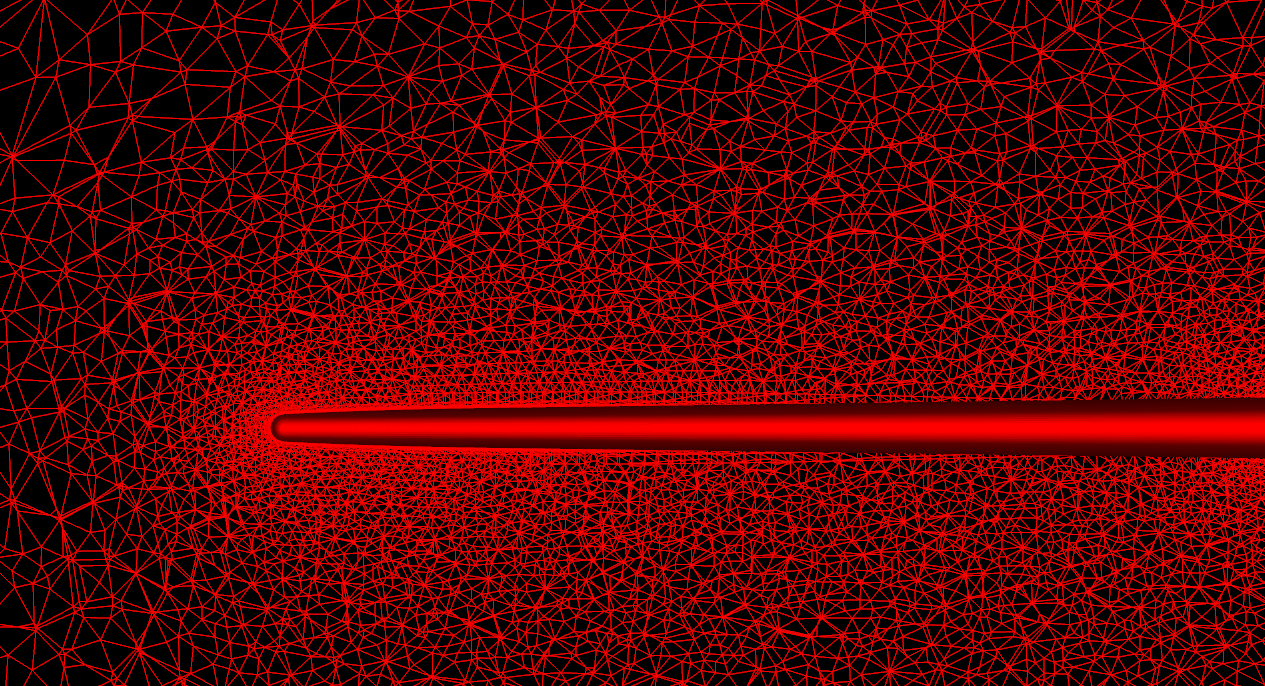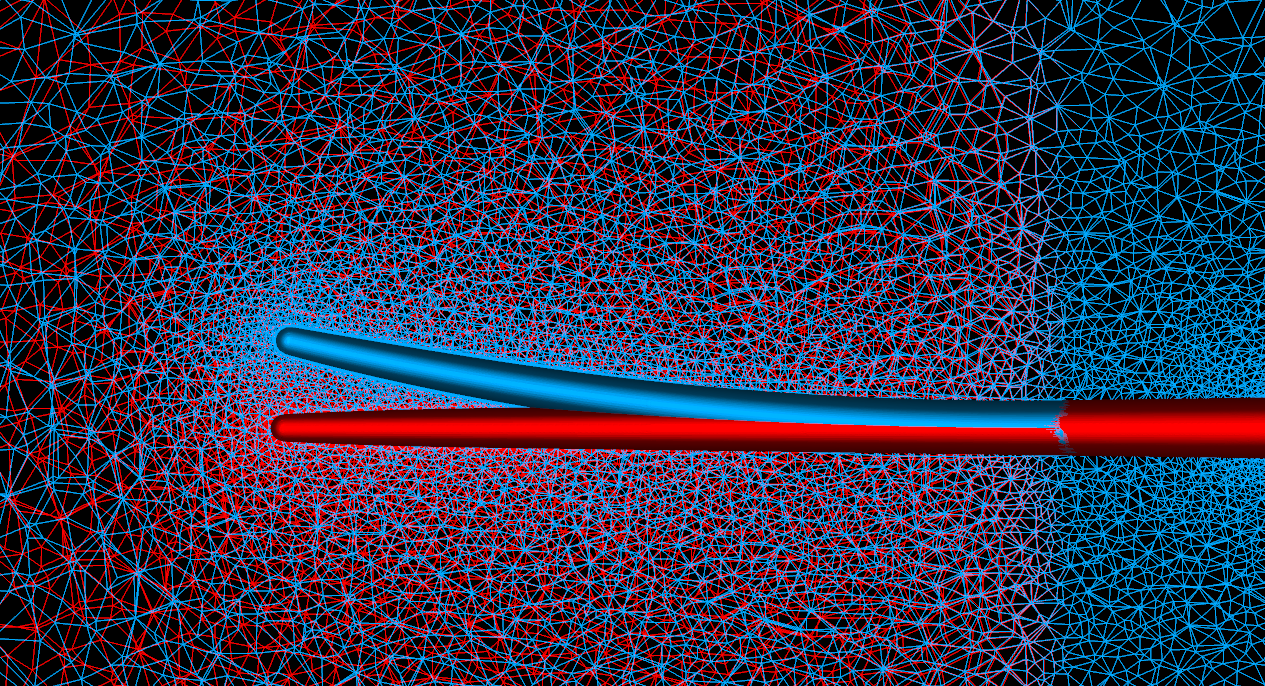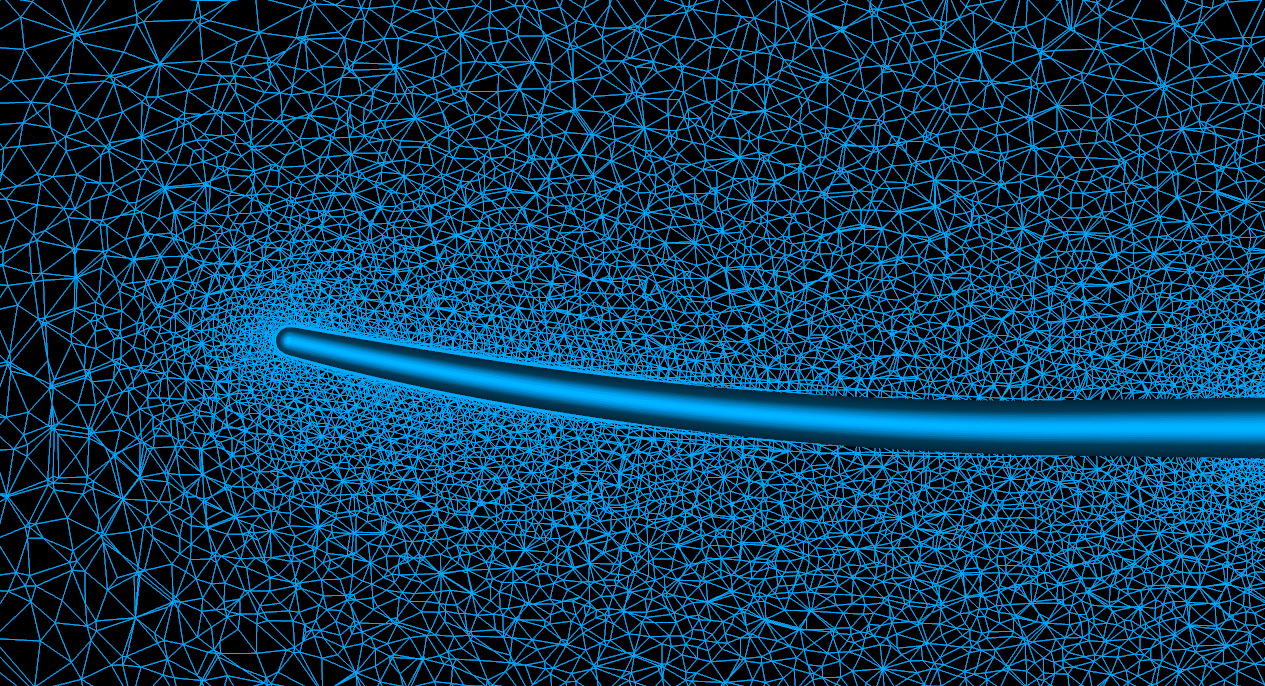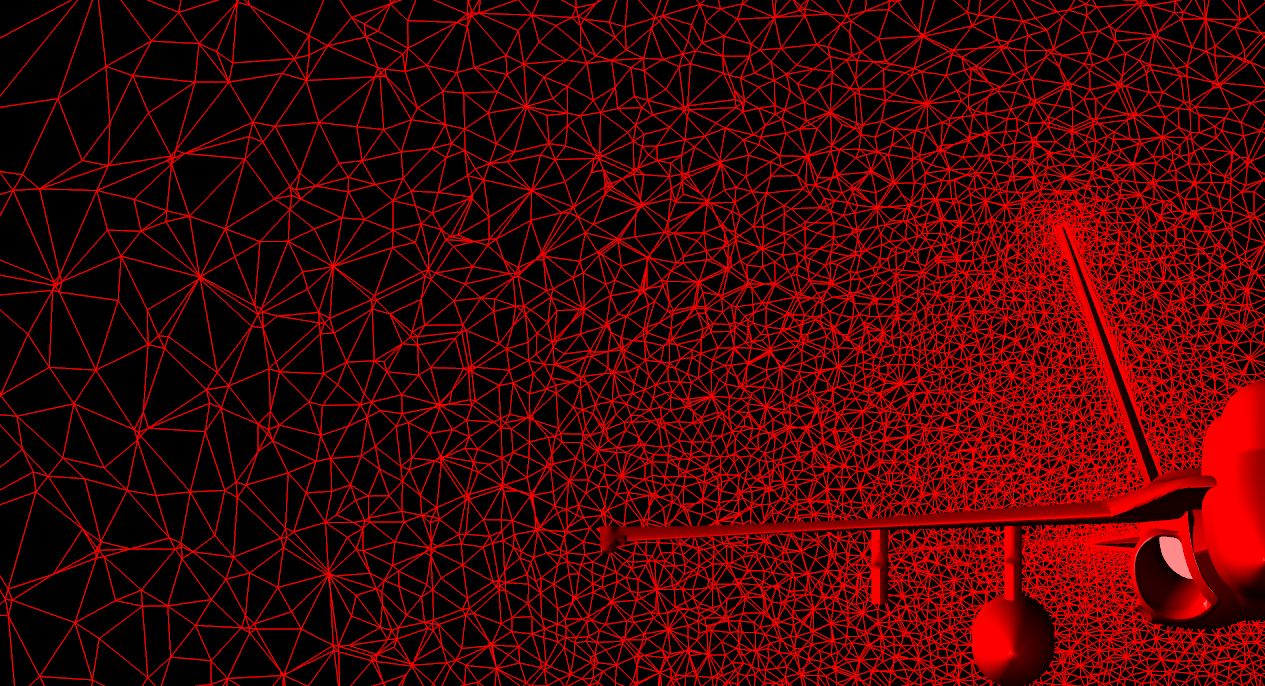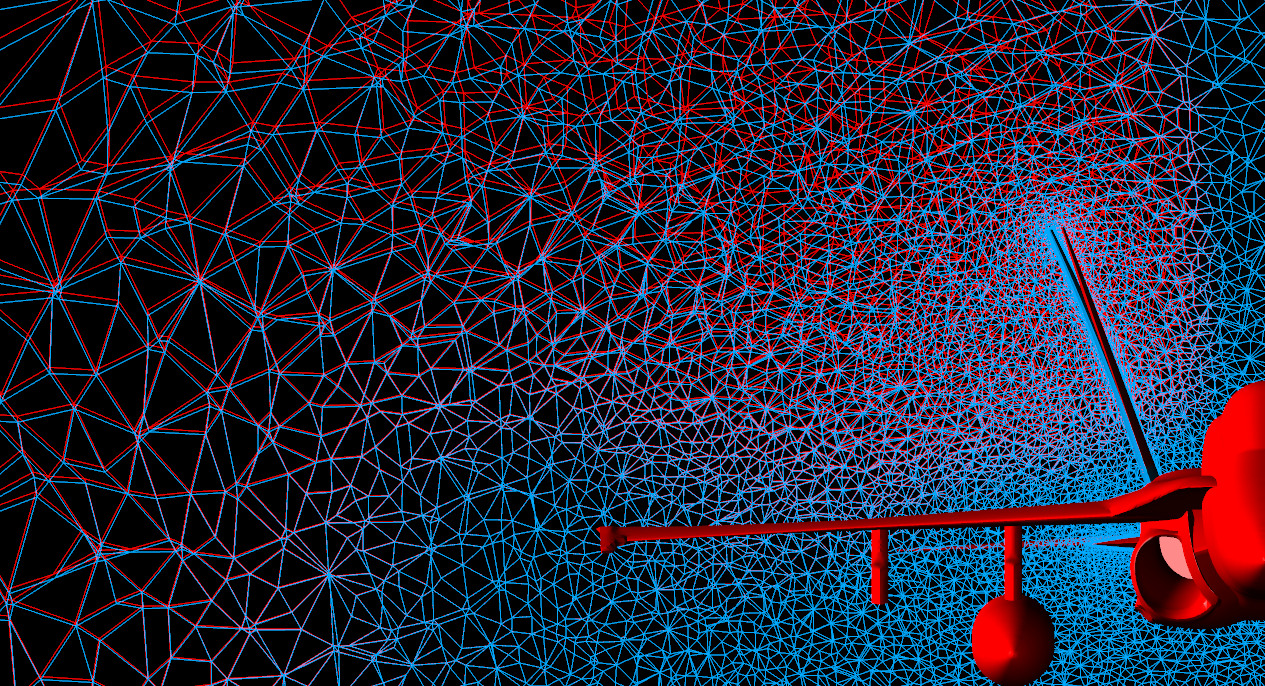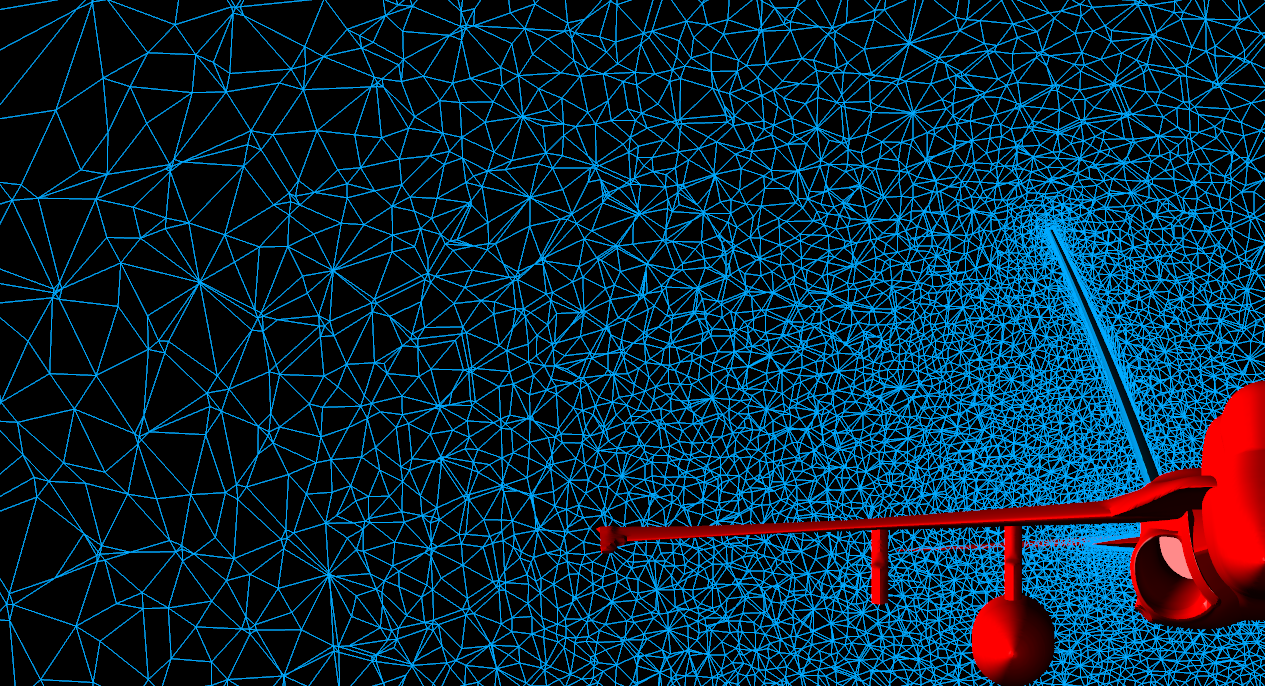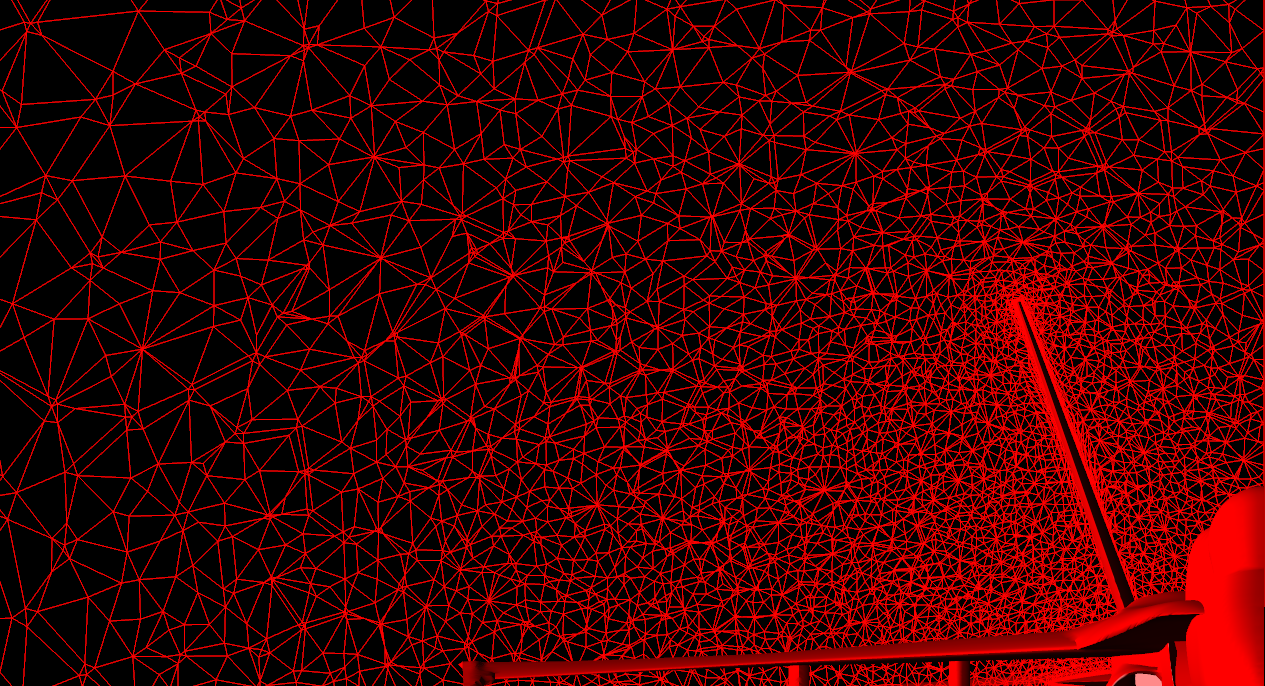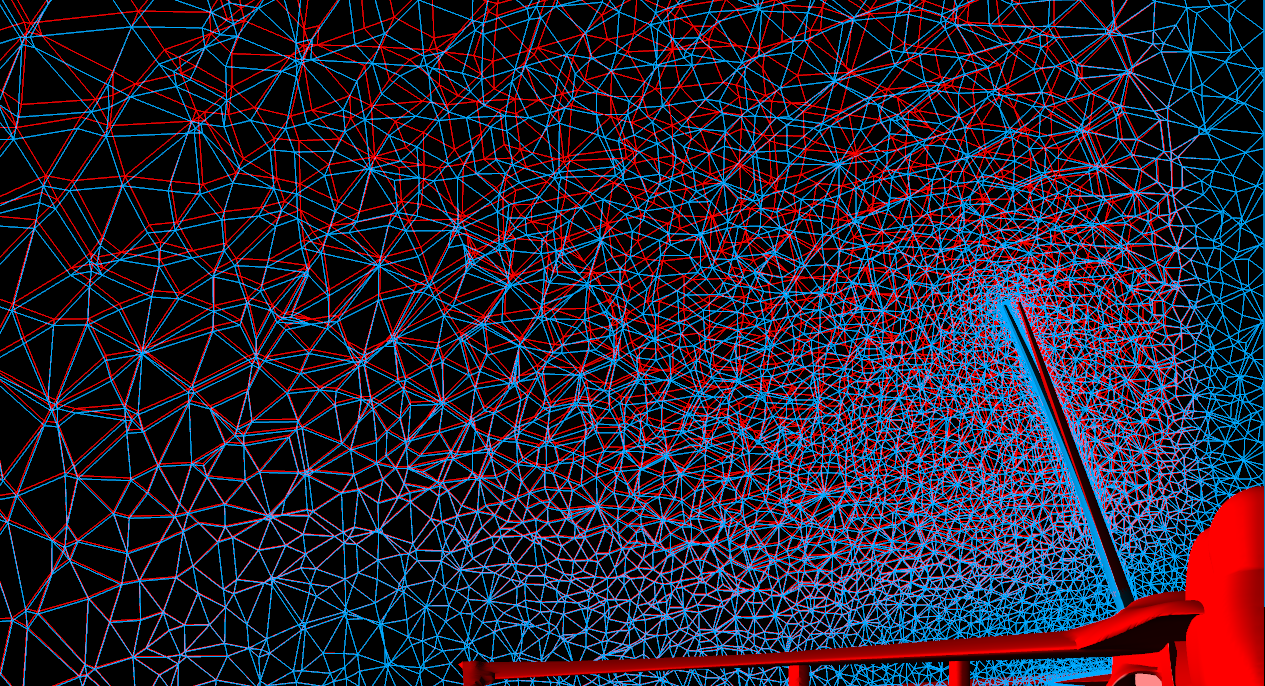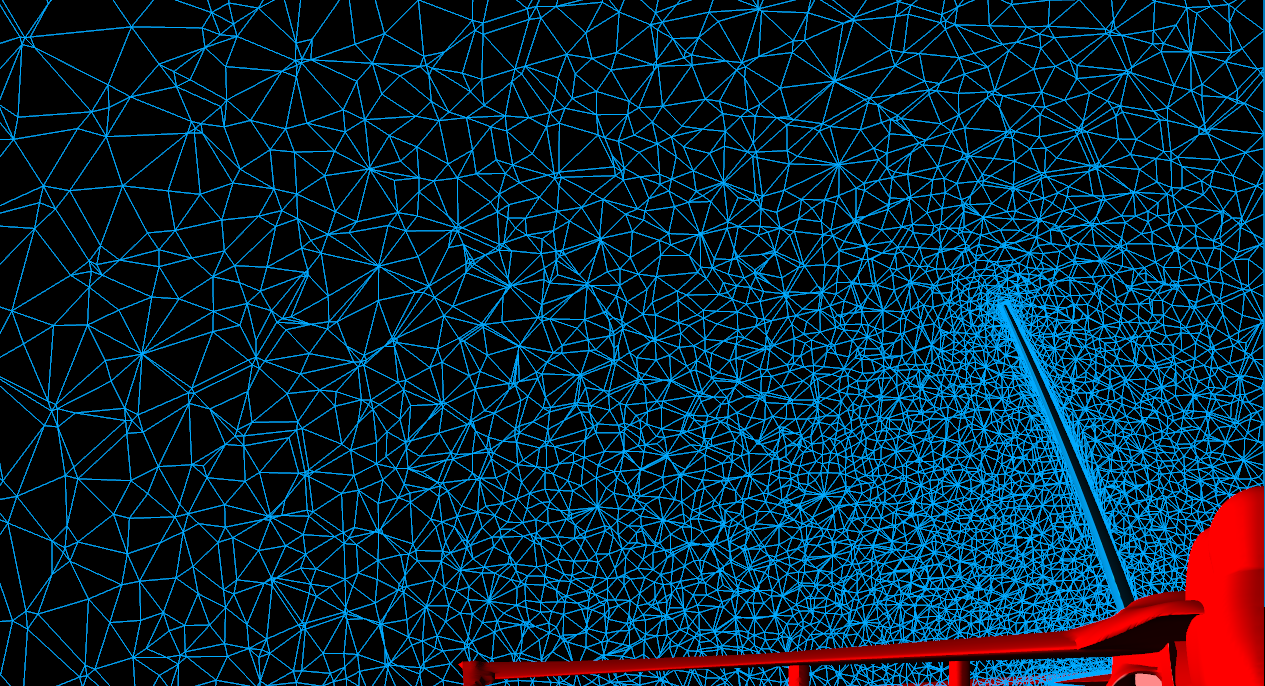For the last month or so, I’ve been focusing on 3-D grids with deforming boundaries. I split this into two main categories: bending and twisting. This article will focus on bending only. I will make a post about twisting in the near future.
The goal of this project is to develop a grid deformation algorithm capable of handling larger than real world deformations. And by handling, I mean producing valid Cobalt grids. If I’m successful, then our customers can simulate real world cases such as aeroelastic deformations.
The first test case I’m going to show is an Onera M6 wing grid. The grid contains 2,276,261 cells (1,832,756 tets, 17,642 pyramids and 425,863 prisms) and is valid for Navier-Stokes simulations. The bending function used is a quadratic displacement based on an amplitude multiplying the square of the span location. The maximum deflection of the tip I could get was 9.25% of the span; anything larger resulted in the dreaded folded faces. For those not familiar with a folded face, first, define a face as the interface between two cells. When flow leaves one cell across a face, it enters the other cell. When a face becomes folded, then the centroids of both cells lie on the same side of the face. This means flow leaving one cell through the face, also leaves the other cells. This is VERY bad as conservation cannot be conserved! That being said, a 9.25% of the span deflection is not bad. This might be good enough for real world cases. Of course, I’d like to do better. The video below shows the bending of the wing compared to the original. And the images show the original grid versus the deformed grid.
The second test case I’m going to show is the F-18C. I focused on bending the vertical tail. The grid has 8,751,809 cells (the breakdown is: 5,925,217 tets, 83,602 pyramids and 2,742,990 prisms). I used the same basic quadratic bending function as I did on the Onera. The maximum tip deflection was 4.0% of the span before encountering folded faces. It seems that initial grid quality plays a role in how large a deflection can occur before an invalid grid is obtained. The video below shows the bending of the vertical tail compared to the original. And the images show the original grid versus the deformed grid.
I’m working on an idea to ‘unfolded’ folded faces obtained during deformation. It’s too early in its development to show anything, but it has produced encouraging results so far. More later…

